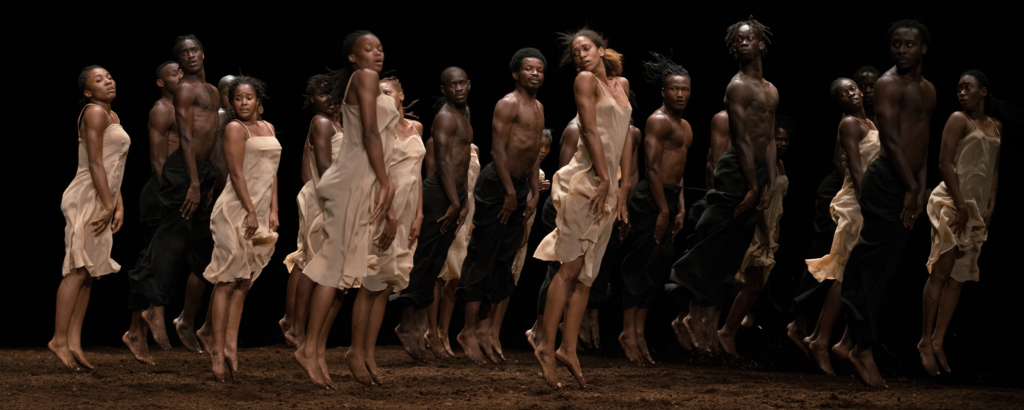Germaine Acogny, the “Mother of Contemporary African Dance,” Continues Her Conversation With Pina Bausch
The last pre-pandemic rehearsal in March 2020 for a production of Pina Bausch’s The Rite of Spring became a streaming video hit titled Dancing at Dusk, starring dancers from 14 African countries. This recast Rite finally premiered live last fall in four European cities, alongside common ground[s], a duet by and for Germaine Acogny and celebrated Bausch dancer Malou Airaudo, a founding member of Bausch’s Tanztheater Wuppertal in 1973. This month, the double bill’s tour continues at London’s Sadler’s Wells, which produced it in partnership with the Pina Bausch Foundation and École des Sables, Acogny’s global dance center in Senegal.
How is the show different today than it was in early 2020?
During COVID, everybody was gone, and I feel like they came back more mature because, I think, this piece was working inside of them all that time. I saw a rehearsal and was so impressed—the movement was so intense, I cried.
What did that pause mean for you and Malou?
I looked back at the video from when we were working together here in Senegal, and we had such a good connection then, like we were sisters. When we came back together, it was not so easy because many things happened in between. Now, I feel it’s better and can grow and not stay the same and, you know, if you have more pleasure you can give more pleasure.
How do you remember Pina?
When I did a choreography with Jawole [Willa Jo Zollar and Urban Bush Women, Les écailles de la mémoire], we were invited by Pina to perform it in Germany. She came to the performance and, afterward, we had a long evening together over dinner at a restaurant. I think that was about five months before Pina died. This project, I think, is a continuation of my conversation with Pina.

It’s easy to see one connection between The Rite of Spring and École des Sables: The piece is performed on dirt, and many classes at the school are held on sand. But common ground[s] is performed on a hard floor. Why?
I trained some on a hard floor, but now I dance mostly on the sand. You feel more light. Malou and me, we practiced only on the hard floor, and the story we developed has nothing to do with The Rite of Spring. The essence, the energy, the connection to the earth is not the same.
How did you and Malou develop the duet’s atmosphere with lighting designer Zeynep Kepekli and dramaturg Sophiatou Kossoko?
We saw that we both liked nature. She likes going to the beach and I like wood, so we bring onto the stage the water, the wood, these elements. The lighting design is a continuation of that, to evoke the sunrise, the sky, the environment. And we cannot forget Fabrice!
…Bouillon LaForest, who composed the music. You’ve been collaborators for more than 20 years now, oui?
Oui—and on Fagaala, which went to New York and won a Bessie Award. He is incredible at getting to the essence of a piece, into each of its scenes.
He’s better known to some as a composer for video games. Have you played any of those?
[Laughs] No, no—that’s not our world. Not yet.
Your work in the 1970s and 1980s disseminated West African dance practices around the globe. In what ways have those efforts come back around in what you see?
Now, I think contemporary African dance can come from anywhere. In the United States, it’s taught at many universities. You can teach it or get your master’s in it. That took a long time, but, finally, it’s becoming recognized just as European dance is. It can only be an advantage to know the richness of African dance.




